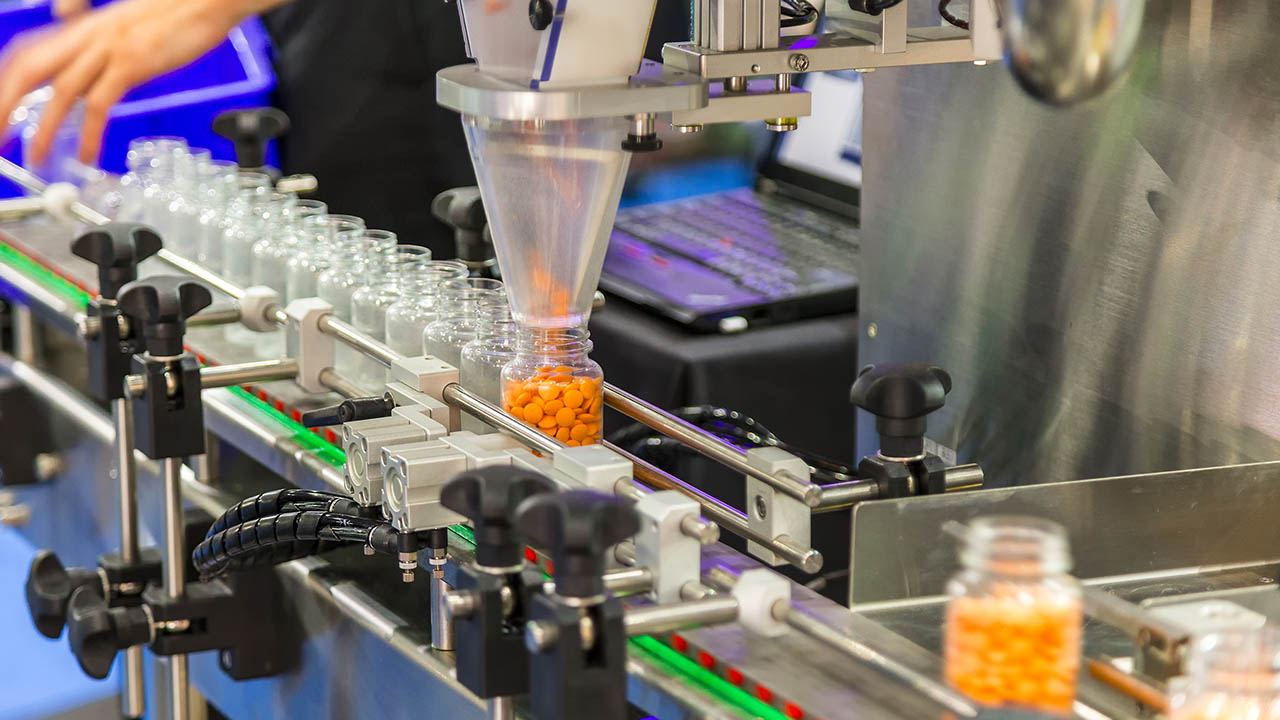
We Must Urgently Rethink How Pharmaceutical Supply Chains are Managed – and the Role RFID Plays
My whole life I have wanted to be part of something big that was designed to help people all over the world. When I was 18, I joined the Air Force with this goal in mind. I served as a hospital medic and then in medical logistics. I knew that every time I showed up for work, I was helping somebody.
We now have an opportunity to help millions of people around the world get the medications they need to treat common and life-threatening ailments. There is a global movement to combat counterfeit drugs and ensure everyone receives medications that were quality checked and sealed by the original pharmaceutical manufacturer. The effort is mostly invisible to the public, but one which has a tremendous impact on every single person on this planet. The criminal insertion of fake drugs into legitimate supply chains costs hundreds of thousands of lives every year and has become a multi-billion-dollar problem.
What the Pharma Industry is Worried About Right Now
The logistical efforts to deliver the COVID-19 vaccine to all parts of the world is an enormous task. The fact that many organizations, competitors or not, are pulling together to meet this challenge is truly inspiring.
However, I’ve had conversations with a few organizations that have dealt with delivering vaccines to underdeveloped areas of the world for years. I was taken back when I discovered that the logistics of delivering the medications wasn’t the largest concern… it was fending off those who would steal the medications and then sell counterfeit versions for profit. Parents were traveling for days to get their loved ones to clinics to get vaccines to ward off malaria, influenza, and other maladies that science has already provided an answer for. I envisioned a mother holding her child who had died from malaria and not understanding why because they received the vaccines they were told would keep them safe.
I wanted to learn if there was a way I could help. I did some research on the global effort to combat counterfeit drugs. The United States’ Food and Drug Administration (FDA) was leading the effort via a Congressional act in 2013. The result of this act was the Drug Supply Chain Security Act (DSCSA). The concept was simple: find a way to track each specific “bottle of medication” as it traveled from the manufacturer to the point of administration so an audit trail could be created to help verify the medication had not been tampered with during transport and storage. The hope was that it would “enhance FDA’s ability to help protect consumers from exposure to drugs that may be counterfeit, stolen, contaminated, or otherwise harmful.” The belief was “the system will also improve detection and removal of potentially dangerous drugs from the drug supply chain to help protect consumers.”
This concept was adopted by countries across the globe and the industry started to work together to fight this problem. When talking recently with senior level executives at several pharma manufacturers, they all agreed that solving this problem remains their top priority.
Why the Solution Isn’t So Simple (and We’re Still Worried about Counterfeit Medication Today)
As you know, I work for one of the world’s leading barcode companies, and the pharma industry uses barcoding as its primary tracking mechanism. So, problem solved… right?! Wrong! The good news is there are standards to identify products with a barcode that are defined globally by GS1. When you look at the barcode on your carton of milk, there is a number that roughly represents the manufacturer and that specific item down to the size, color and packaging. This is known as the Global Trade Identification Number (GTIN). What that barcode/GTIN doesn’t do is identify that specific carton of milk you’re holding in the dairy section of the supermarket.
Members of GS1, the FDA and various representatives from the pharma supply chain formed a group to figure out how to leverage GS1 standards to track specific “bottles of aspirin.” They determined that a unique serial number must be added to the number that defines that specific item, something that has since become known as a Serialized Global Trade Identification Number (SGTIN).
It was such a great solution, this logic was ultimately extended to cases, cartons and pallets so trading partners would know where the GTIN was stored as it moved through the supply chain. The ability to identify which SGTIN is in which case and on which pallet is referred to as “aggregation.” Aggregation is simply a parent-to-child relationship that can be shared electronically as product is shipped and received between two trading partners.
But enough of the technical mumbo jumbo.
What you really need to know is:
1. the FDA has been mandating a series of improvements since 2013, such as ensuring that an SGTIN is incorporated in every sellable unit, shipping container and pallet.
2. the final chapter in this story is slated to take effect in November 2023. At that time, the entire pharma supply chain is required to electronically capture the aggregation data and submit that information electronically to their trading partner using a GS1 standard file format known as EPCIS. You may have heard this type of exchange referred to as an Advanced Shipping Notice (ASN) transaction. The ASN is sent from the shipper to the receiver so the receiver can quickly reconcile that they received what was ordered from the shipper. Most of the logistics industry simply uses barcoding to scan a few cases on a pallet to confirm what’s in the system is a reflection of reality – of what they’re seeing right in front of them. Well, the last milestone in the DSCSA requires that each case on a pallet is accurately identified to ensure the ASN/EPCIS transaction is accurate. If it’s not, the receiving party has a set amount of time to rectify the issue with the shipper, which is costly and time consuming and can potentially delay the distribution of time- and temperature-sensitive medication.
That brings us to why pharma executives are so focused on this issue.
Well, it’s simple really: to ensure the ASN is accurate, logisticians must ensure they have scanned all the cases on a pallet, including those in the middle. If you’ve worked in a warehouse, you are starting to get the picture. Suddenly, they’re being told workers will have to disassemble every pallet and ensure that they use line-of-sight barcode scanners to identify every case on those pallets. In some instances, there may be hundreds of cases on a pallet. Barcoding is great, but it relies on humans and line of sight, which will likely bring the shipping and receiving processes to a screeching halt as the pharma supply chain strives to comply with this new mandate.
The executives I spoke with are trying to identify new solutions that will provide a fast and accurate solution to the aggregation and data transmission requirements that will be effective in November 2023. If you recall, this is a global pharma supply chain issue, so everyone involved is scrambling for a solution – not just pharma manufacturers. The cases on each pallet change as they move downstream within the supply chain. A pallet of 100 cases of aspirin is created at the manufacturer, but the wholesaler or point of care may order a pallet with multiple types of products. These aggregation events throughout the supply chain become the focus of the problem-solving effort.
That sure is a lot of information and anxiety to put out into cyberspace!
Worry Not: There is a Solution
If you recall, I opened this blog post with my desire to make an impact and help people in the world. “But what can I do,” you say?
What if I told you I worked for a world-class solution company that was really good at tracking products and capturing edge data – better than anyone else in the world! – and that we have found a way to help you solve this problem?
(And by problem, I really mean problems. The best way to solve the worldwide counterfeit drug issue is to find a way to inspect pallets and cases without needing someone to lay eyes or hands on every single one at every checkpoint.)
You see, Zebra is so much more than a barcode company. We were recently named a Leader in the 2021 Gartner® Magic Quadrant™ for Indoor Location Services, Global, for the second year in a row*. We know how to creatively apply technologies like RAIN RFID to solve big problems. We know how to think beyond barcodes.
At this point, all the engineers in the audience are throwing up their hands in disgust. “You have a great heart John (insert pat on the head). But don’t you know that RAIN RFID can’t work with liquids, foil and other attributes that are commonly found in the pharma industry!? It’s a pipe dream at best… just give the world some better barcode scanners and call it a day.”
Well, there’s one thing that never sits well with me… “can’t.”. It has never been a popular answer for me to accept.
If anything, it challenges me to dig in more. In this case, I drew from my Air Force experience as a medic and in medical logistics when thinking about potential solutions. I remembered the packaging used in pharma had a lot of air gaps. I thought, what if there’s enough air to allow radio frequency (RF) energy to pass through an exterior case pallet and register with a case tag on an interior case label? If there is, we have a few solutions that could potentially solve the case-to-pallet aggregation problem.
Are you ready for the big reveal?! Turns out that for most pharma product attributes, there was enough air gap to read all cases quickly and accurately on a pallet and therefore answer the case-to-pallet aggregation riddle.
I know! Big news!
We are currently vetting our solution with thought leaders and supply chain members in the pharma industry. We have received very favorable feedback and are in a great position to join the fight against counterfeit drugs across the globe.
Zebra’s solutions, coupled with our global partner network, stand ready to make a significant contribution to enabling our customers to meet the DSCSA regulations and keep our families safe. I am excited to come to work each day because I am part of a global team that makes a difference every single day.
###
Related Reads:
- One Month In: Assessing the Impact of the Falsified Medicines Directive on the Global Healthcare Supply Chain
- Ask the Expert | What is RFID? And, More Specifically, What Is RAIN RFID?
*Gartner, Magic Quadrant for Indoor Location Services, Global, Tim Zimmerman, Annette Zimmermann, 15 February 2021
Gartner and Magic Quadrant are registered trademarks of Gartner, Inc. and/or its affiliates in the U.S. and internationally and is used herein with permission. All rights reserved

John Wirthlin
John Wirthlin is the Principal Owner of Tip of the Spear Consulting, which provides supply chain technology consulting services that identify relevant solutions to meet corporate objectives.
He previously served as the Industry Principal for Manufacturing, Transportation and Logistics at Zebra Technologies where he was responsible for providing forward-thinking, strategic-oriented, technology recommendations to clients and partners.
John has nearly 30 years of experience in healthcare, logistics, manufacturing, and information technology where he has led multiple strategic initiatives. He is viewed as a trusted advisor to his clients and organizations in which he has served.
Prior to Zebra, John served as a Solutions Architect with Lowry Solutions, where he provided consultative services to multiple manufacturing clients to help identify meaningful RFID and ECM-based solutions.




